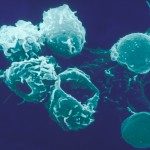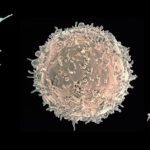CONTEXT. Non-alcoholic fatty liver disease is the most common chronic liver disease in western countries. It
represents a continuum encompassing stages ranging from isolated steatosis to non-alcoholic steatohepatitis (NASH),
characterized by lobular inflammation and ballooning, with or without fibrosis. NASH coul progress toward the hepatocellular carcinoma. The liver is a frontline immunological organ containing numerous innate and adaptive immune cells. An imbalance of pro- and anti-inflammatory responses involving both innate and adaptive mechanisms affects the induction and progression of NASH. Type 1 innate lymphoid cell (ILC1) and NK cells are the most abundant hepatic subsets of innate lymphocytes. They promptly sense changes in liver homeostasis. ILC1 are resident in the liver and specifically display cytotoxic capacity directly through expression of Granzyme B and indirectly through IFNg production. Recent studies have suggested a role for ILC in immune-mediated liver diseases.
HYPOTHESIS. We suspect that ILCs participate to the damaging inflammatory process through their alterations possibly resulting from the gut-liver axis dysregulation. RESULTS. Using NASH and steatosis-inducing diet, we showed early alterations in ILC1 and NK populations in gut and liver with impairment of IFNg production, increased gut permeability and CD8 T cell late alterations. AIM. We will determine the contribution of ILC, in part through IFNg production, to the different stages of steatosis, NASH and HCC development and their interactions with CD8 T cells and Kupffer cells.
WORKPLAN. We will determine whether: 1. ILC1 directly contribute to the liver pathology in NASH. Using new mouse lines for inducible depletion of all IFNg -secreting cells or only functional NK/ILC1, we will delete these populations at different time points after diet initiation and evaluate both immune and metabolic parameters of NASH. We will evaluate NASH outcome in IFNg & IFNgR-deficient animals. Proteomics of liver fluids will be performed to isolate differential chemokine/cytokine signatures responsible for recruited NK subsets. Proteomics will also characterize the immune environment and provide information on its possible role on other immune subsets. 2. ILC indirectly contribute to NASH through modulation of intestinal functions. Using a new ILC3 fate mapping mouse line, we will monitor a) their in situ differentiation from precursors, b) their gut localization, c) their plasticity towards ILC1 subset. 3. ILC1 interact with CD8+ T cells and/or KC. We will isolate ILC from circulation, liver, adipose tissue and intestine from NASH or chow diet-fed mice and perform single cell RNAseq analysis. Contribution of dysregulated molecules and pathways in liver ILC1, identified by RNAseq, to a direct and indirect crosstalk with CD8+ T cells and KC will be analysed. 4. Specific components of NASH-inducing diet impact on immune populations and intracellular metabolism. We will mimic the effect of a NASH diet in vitro to elucidate the impact of the steatogenic compounds on ILC and CD8+ T immune functions. They will be sorted and cultured in the presence of palmitate, high glucose concentrations or cholesterol and their phenotype and functional changes investigated.
IMPACT. Beyond the understanding of ILC role in NASH, we will establish a rational basis for new
therapies targeting these innate cell subsets to prevent NAFLD progression.
CONTACT : Pr Rachel GOLUB – 01 45 68 87 66 – rachel.golub@pasteur.fr


